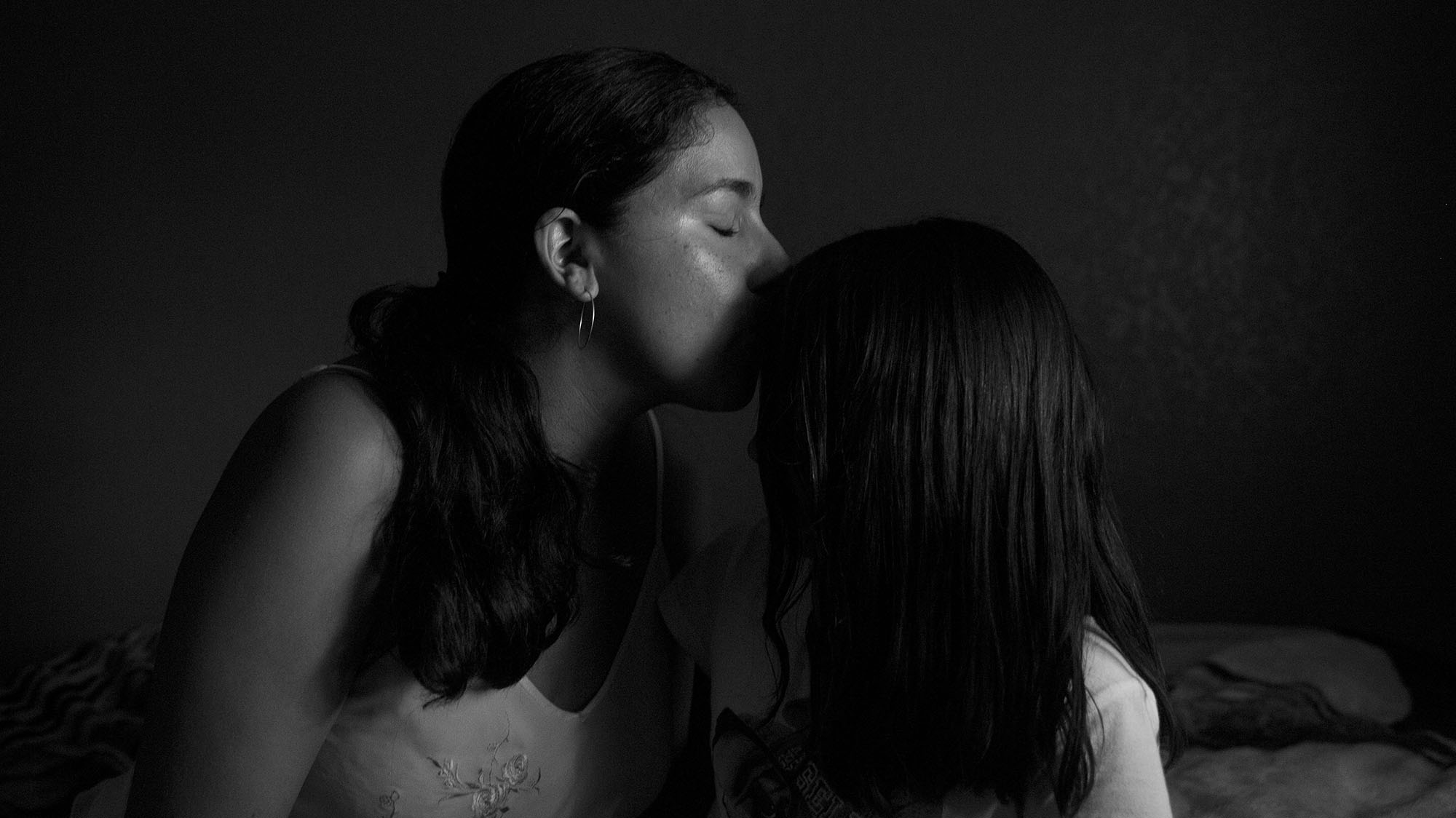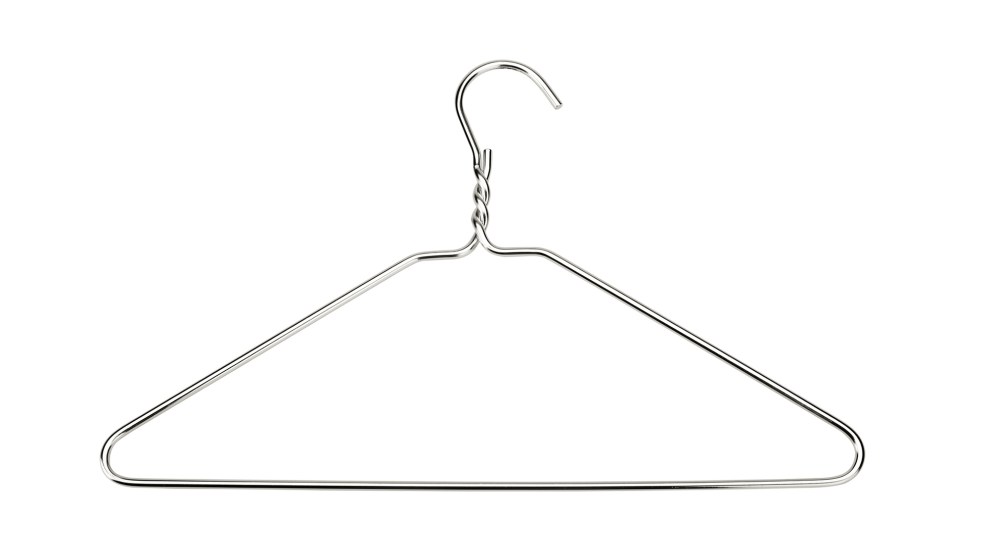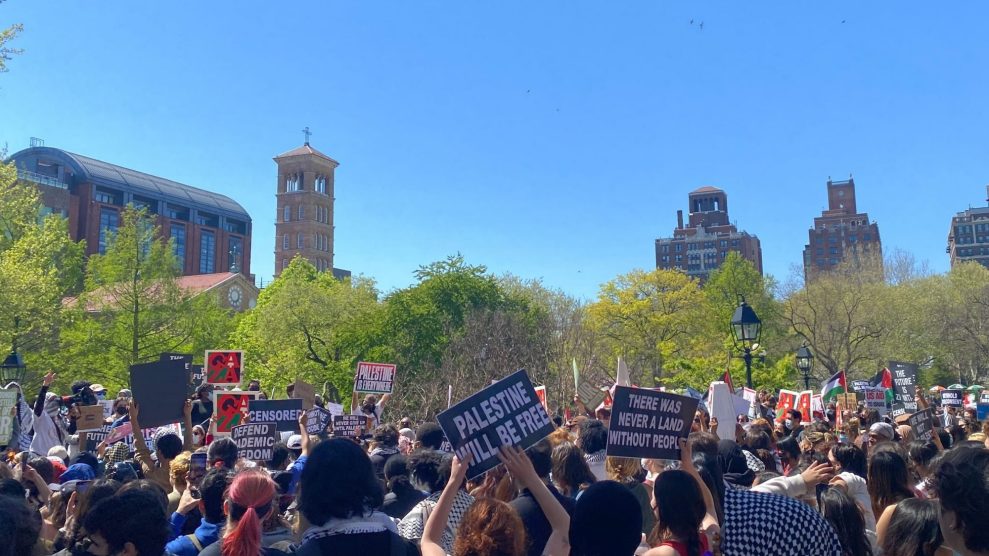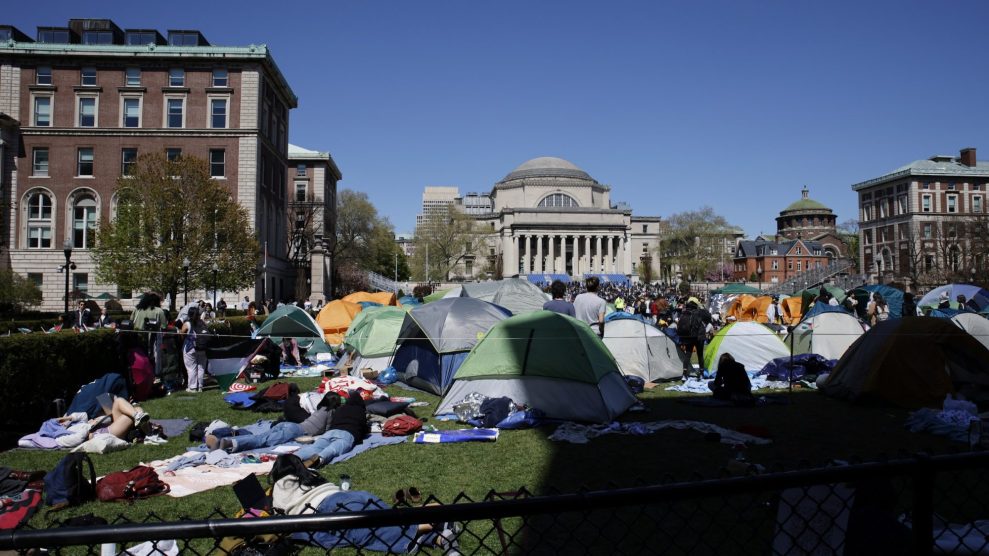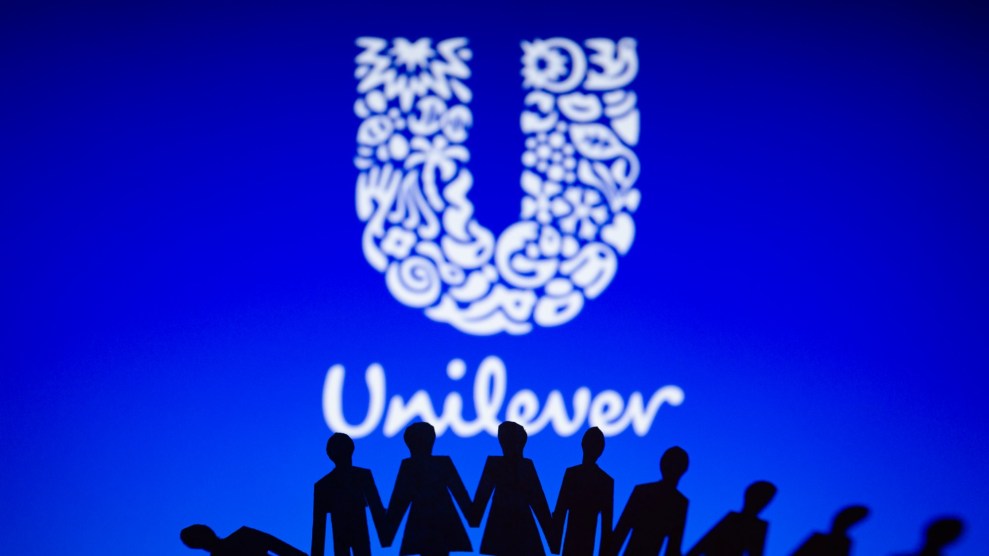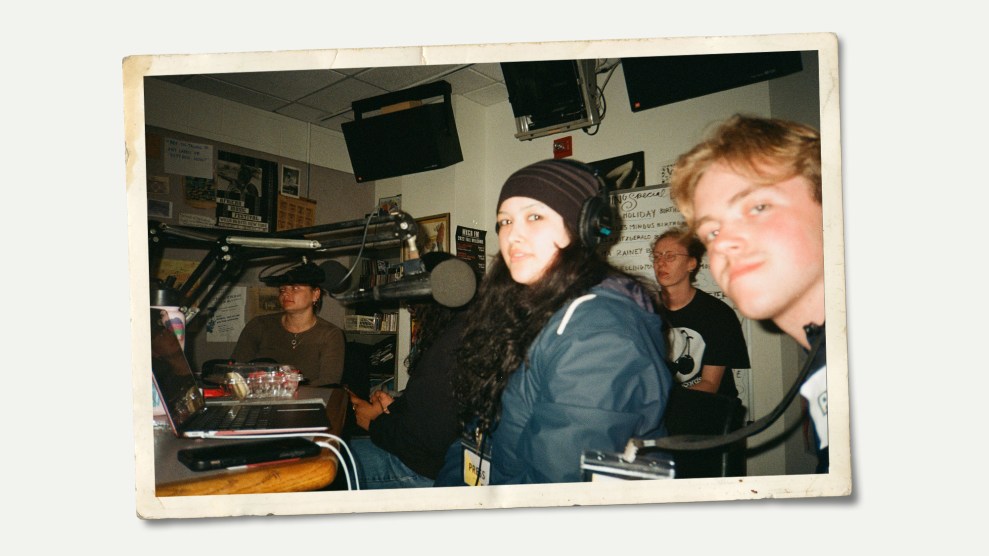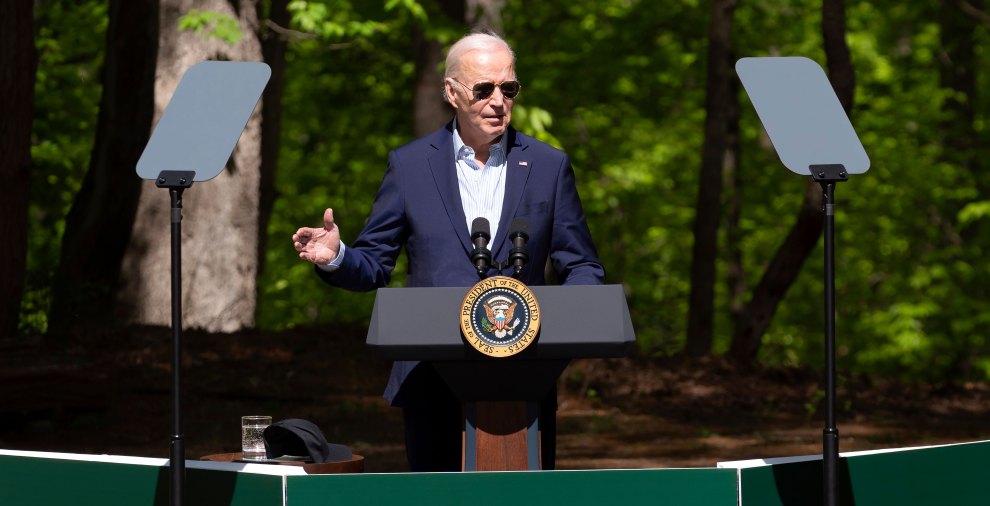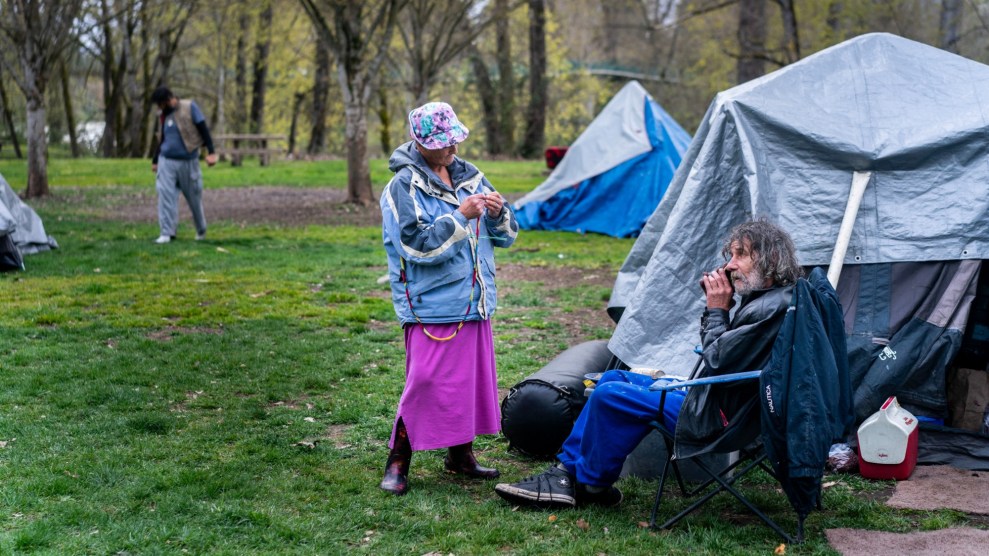These photos were originally published at the San Antonio Express-News.
Aisme clenched her daughter Jess’s hand as Dr. Bhavik Kumar began her abortion procedure at Whole Woman’s Health in San Antonio, Texas. When Jess, 25, first discovered she was pregnant, her mother drove her from Del Rio, Texas, where they live, into Mexico twice to procure abortion pills. Though the pills are illegal when used for abortions in Mexico, Aisme and Jess determined it was more difficult to get the pills in Texas; getting to the closest abortion clinic requires a drive of over 100 miles away. (The full names of Aisme and Jess are being withheld for privacy.)
Both of Jess’s attempts to self-induce failed. Desperate, Aisme had no choice but to drive her daughter the 150 miles to San Antonio. In total, Jess was forced to miss two weeks of work.
Jess’s story is not unique. Over the past few years, access to abortion has been systematically restricted in Texas. This year alone, the state proposed more than 50 bills aimed at regulating and limiting abortion access.
The battle over abortion rights in Texas really reached a crescendo in 2013, when House Bill 2 was enacted. The sweeping anti-abortion law required providers to have admitting privileges at local hospitals and mandated that abortion clinics adhere to regulations required of ambulatory surgical centers. In response, Whole Woman’s Health sued the state. In June 2016, the Supreme Court sided with the clinic in a 5-3 ruling and overturned those provisions, stating that they caused an undue burden on a woman’s constitutional right to abortion. But, by that point, more than half the abortion clinics in Texas had already closed. Today, only two of the clinics shuttered by HB 2 have been able to reopen.
Debates over abortion access continue to roil state capitols and courts—both in Austin and across the country. All too often, though, these debates leave out the voices of women, on both sides, who are most affected by the decisions made by lawmakers. Living in Texas as a photojournalist for the San Antonio Express-News, I felt compelled to examine the fight over abortion access. In early 2016, with the knowledge that a Supreme Court decision about HB 2 was pending, my editor Luis Rios and I began to discuss how to cover this topic in a more nuanced way. We decided that I should work on a long-term project spending time with women on the frontlines of the abortion wars, in communities most affected by these changes.
My aim for this project was to intimately examine the motivations and larger cultural context behind women’s decisions and convictions about abortion—as well as to add a much-needed human element to one of American politics’ most hotly contested topics.
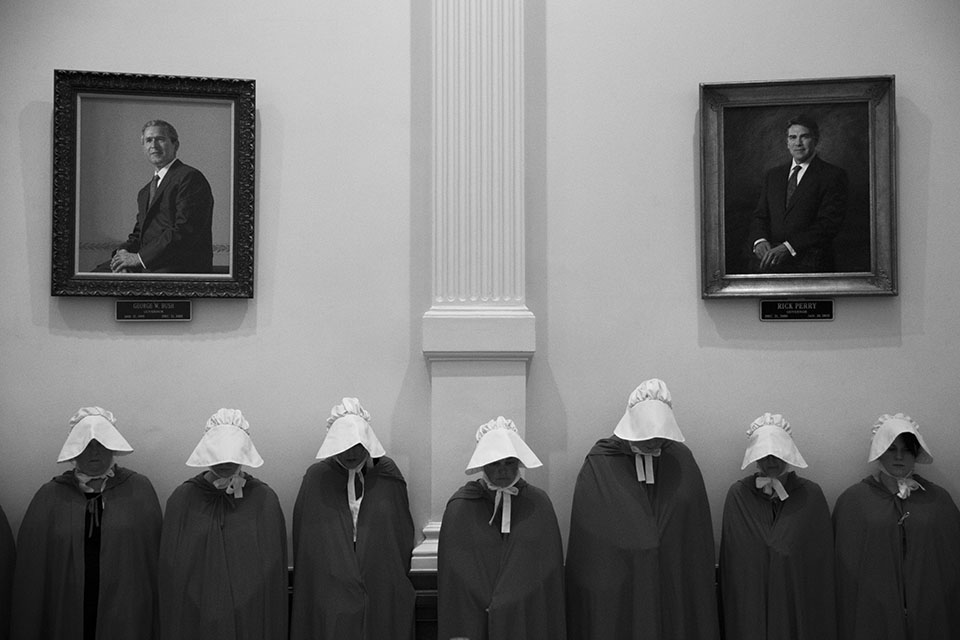
Women dressed as characters from the book and the recent TV show The Handmaid’s Tale participate in a protest for reproductive rights at the Texas State Capitol in Austin for the first day of the legislature’s special session on July 18, 2017. “While the Texas legislature is in session, no woman’s health is safe,” Stephanie Martin, one of the handmaids, said. “People are confronted with wondering, ‘Why are you bringing this terrible story to life?'”
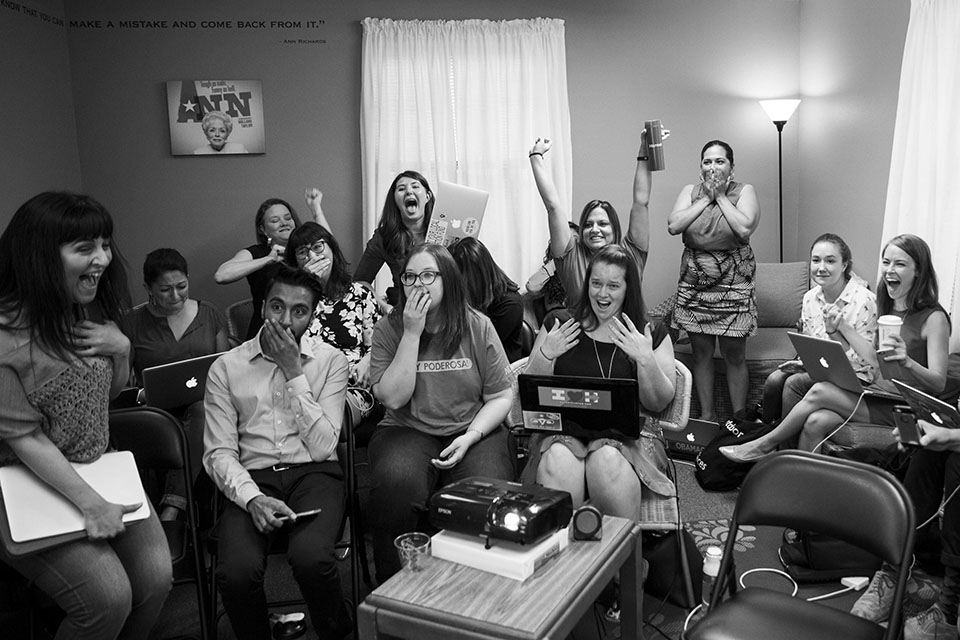
In a building that formerly housed Whole Woman’s Health in Austin, abortion providers and clinic staff are joined by advocates for women’s reproductive and abortion rights in celebrating the Supreme Court verdict in Whole Woman’s Health v. Hellerstedt on June 27, 2016. Nearly a year later, the clinic reopened.
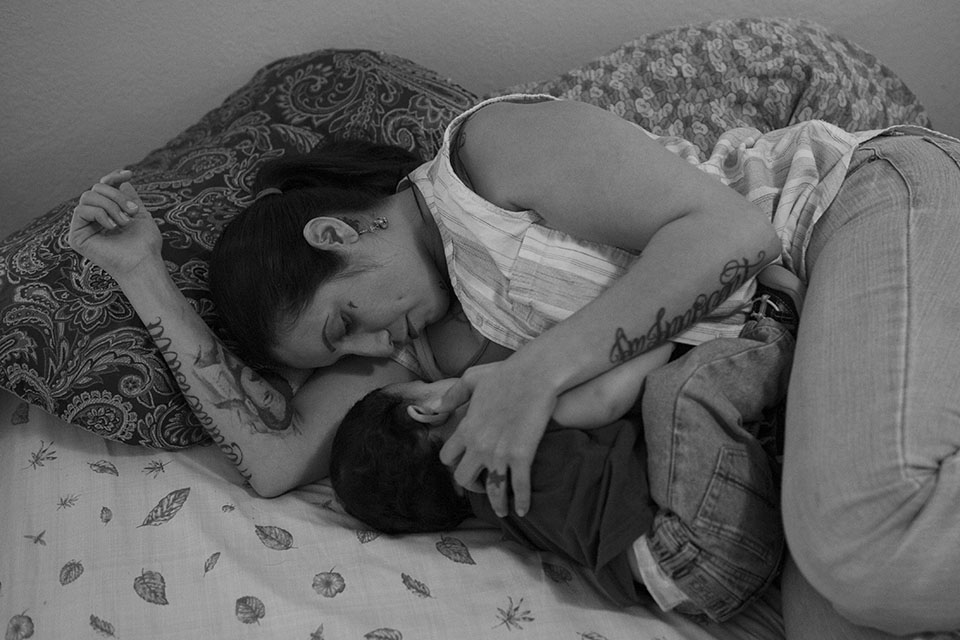
Mercedes Soto, a former gang member who got pregnant after she was assaulted, holds her son Samson at their home in Edinburg, Texas, on October 18, 2016. She tried to self-abort using pills, toxic teas, and other methods, but none worked. After the attempts to end the pregnancy, she was heading into the McAllen Whole Woman’s Health abortion clinic when a pro-life sidewalk activist convinced her to keep the pregnancy. Soto has since become deeply involved in the pro-life movement, taking Samson and his sister, Delilah, to anti-abortion protests.
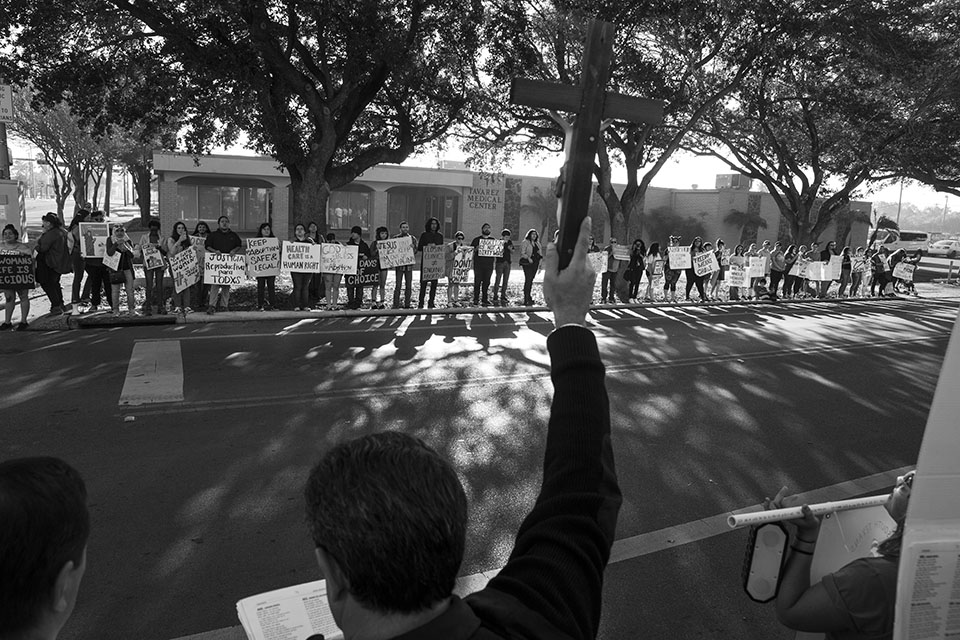
Abortion opponents and abortion-rights advocates gather on the main street in McAllen, Texas, to face off on the weekend of the 44th anniversary of Roe v. Wade on January 21, 2017.
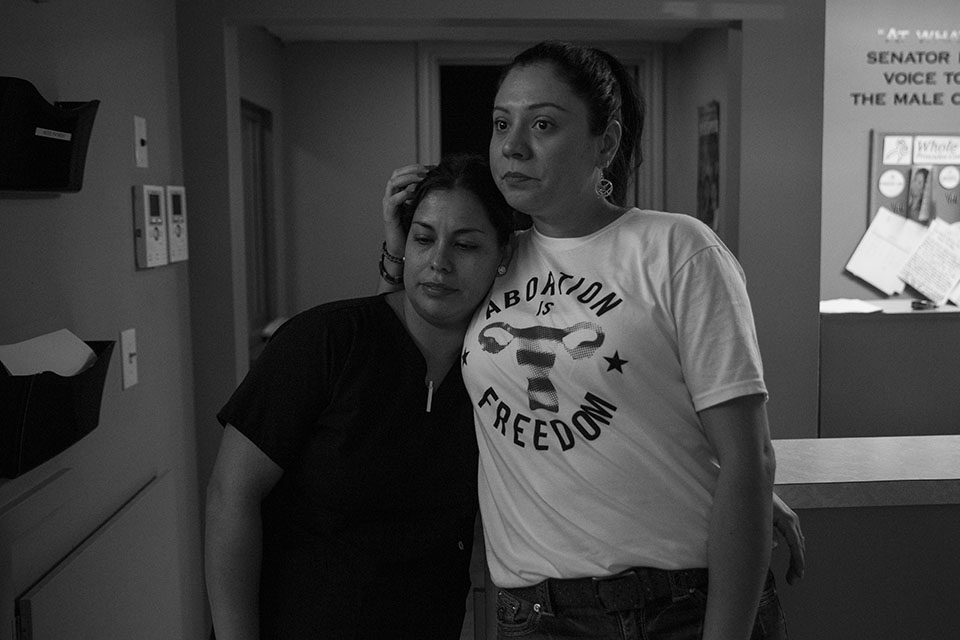
While more than a thousand pro-life advocates rallied in front of the clinic, Andrea Ferrigno, right, vice president of Whole Woman’s Health, comforts Kristeena Banda, left, clinic director in McAllen, after Banda finished seeing patients on January 21, 2017.
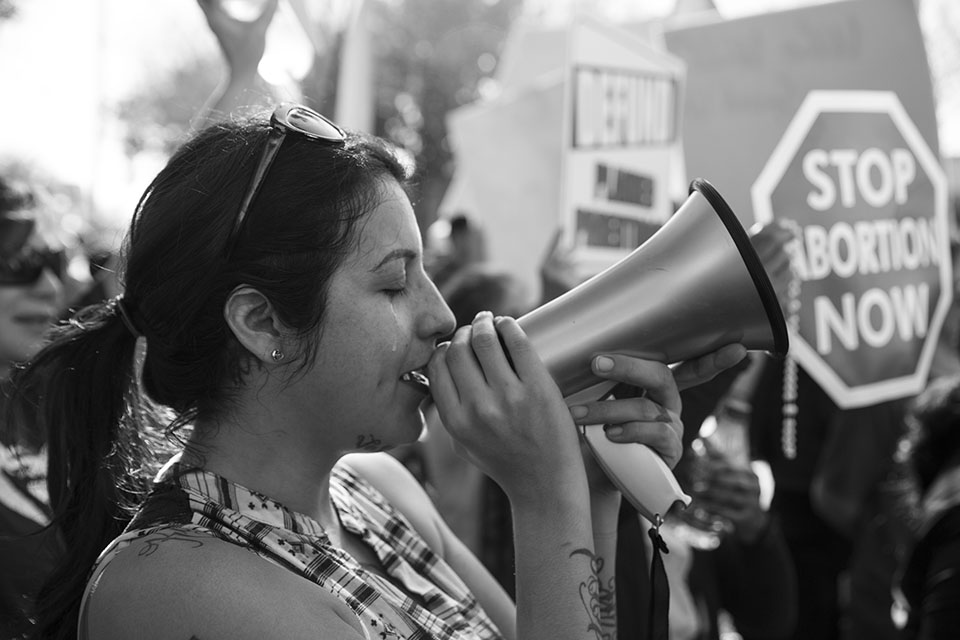
Soto cries as she sings a hymn into a megaphone while she and more than a thousand other anti-abortion protesters face off with abortion-rights advocates in the intersection in front of the McAllen Whole Woman’s Health clinic on January 21, 2017.
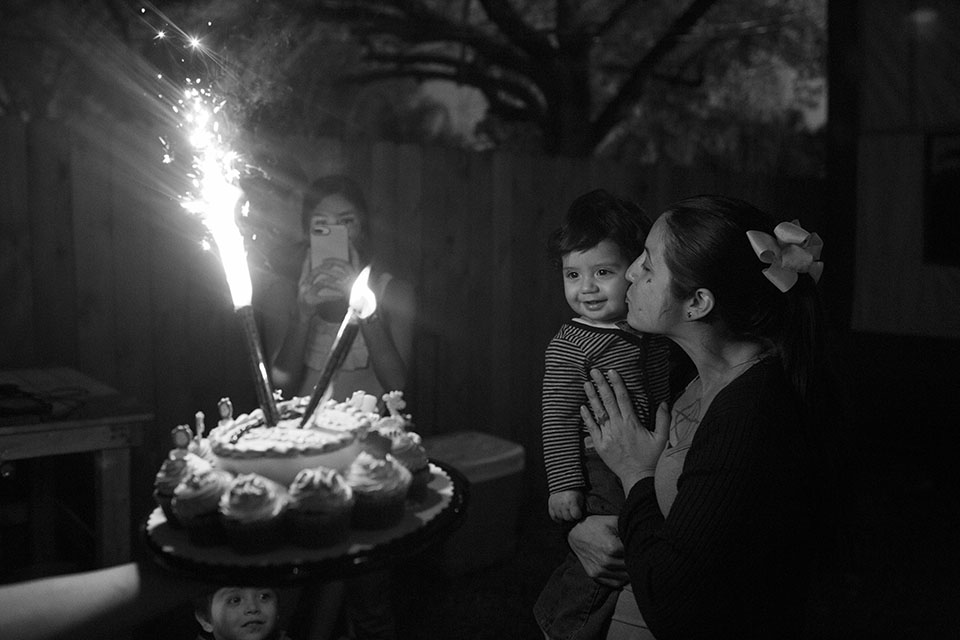
A Noah’s Ark-themed birthday cake is presented to Soto’s son Samson during his first birthday party, held on the 44th anniversary of Roe v. Wade, in their backyard on January 22, 2017.
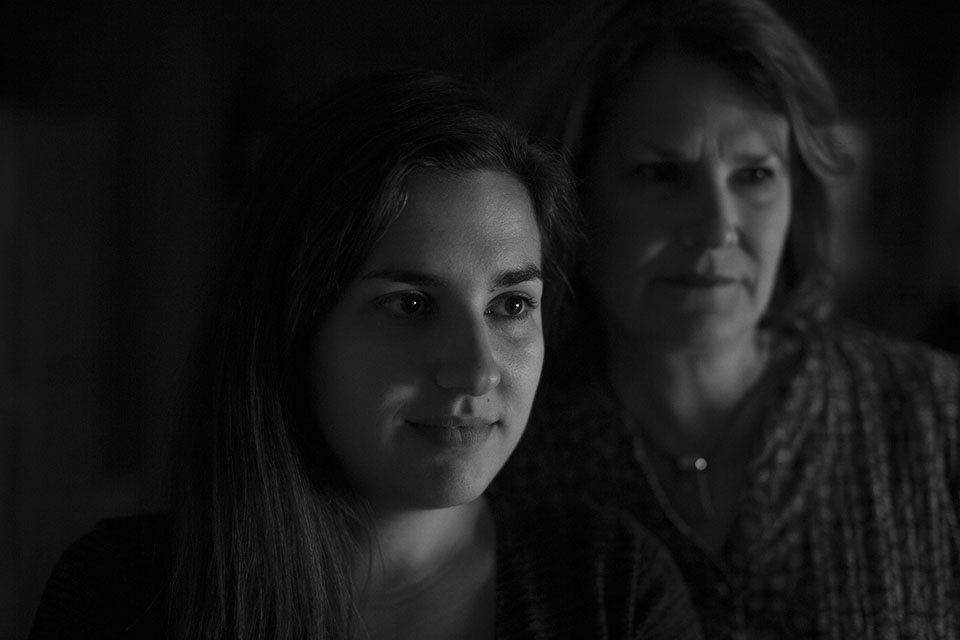
Cindy Silberman, right, was pregnant with her second child when she discovered she had breast cancer, which was accelerating because of pregnancy hormones. She would not live long enough to give birth if she continued the pregnancy without chemotherapy, and the chemotherapy would kill the fetus. She chose to have an abortion, with the hope that her cancer treatment would allow her to continue to be a mother to her daughter Rachel, left, pictured at home in Austin on February 22, 2017.
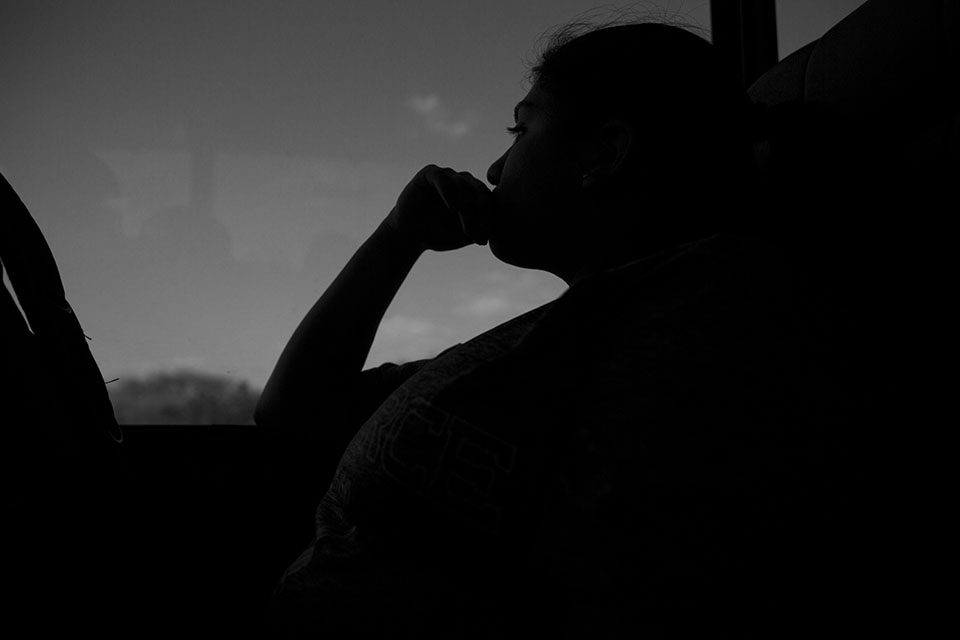
Kristen, 18, looks out the window of a Greyhound bus during the more than four-hour ride back to Del Rio, Texas, after getting a medication abortion at the Whole Woman’s Health clinic in San Antonio on March 17, 2017. In accordance to Texas law, Kristen had to wait 24 hours after her consultation appointment before she could receive the medication at her next appointment. Kristen didn’t know to tell the clinic she had traveled more than 100 miles to get there; if she had, Texas law says they could have done part of the consultation appointment over the phone, saving her one of the trips to the clinic. She had to spend more than $200 on a hotel room and, because she does not have a car, her bus ride was nine hours roundtrip. Her last name is withheld for privacy.
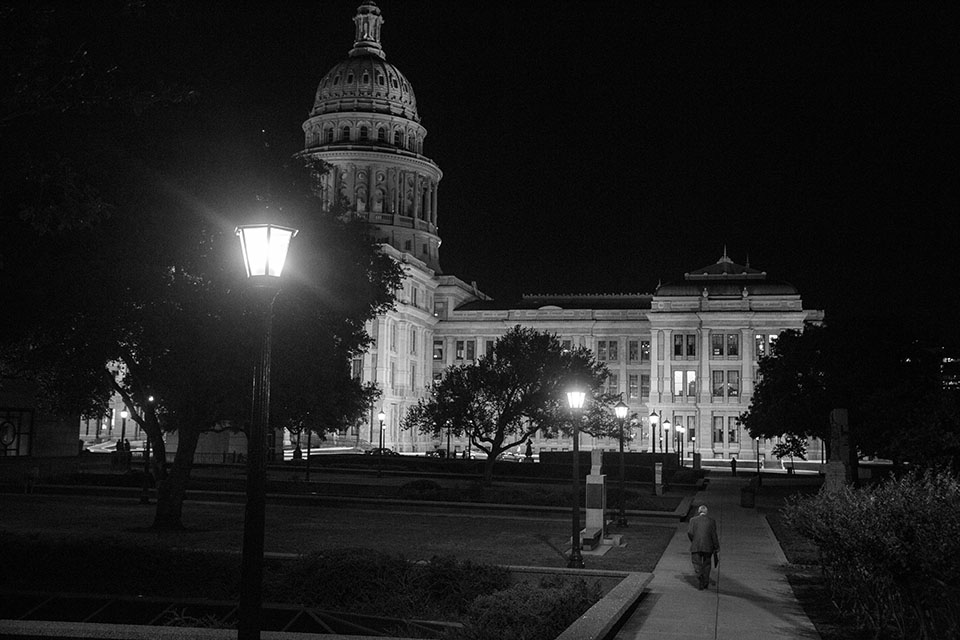
Rep. John Smithee (R-Amarillo), a supporter of HB 1113, which aims to ban private insurance abortion coverage, walks away after a committee hearing on the bill at the Texas State Capitol in Austin on May 3, 2017. During the hearing, Silberman tearfully told the story of her medically-necessary abortion.
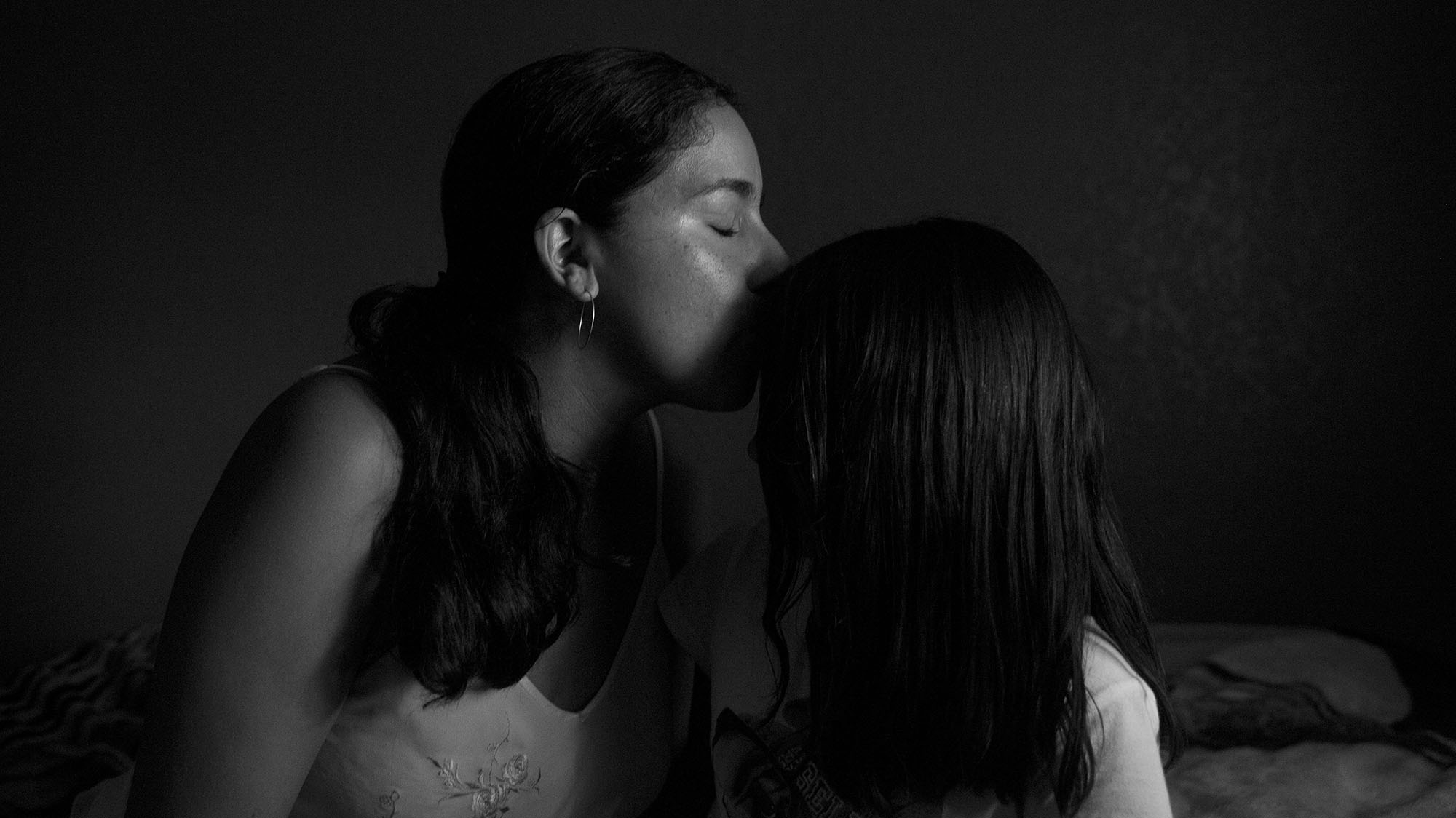
Sofia Peña sits in a bedroom with her daughter at her home in McAllen on May 18, 2017. Peña was in a rocky relationship when she became pregnant with her daughter. She desperately wanted an abortion, but her boyfriend was against it, so she continued the pregnancy and later struggled to raise her daughter without the father’s consistent involvement. Before the relationship ended, she became pregnant again. This time she got an abortion. Now Peña helps run La Frontera Fund, which provides financial support for low-income women to travel to and from clinics. Her daughter’s name is withheld for privacy.
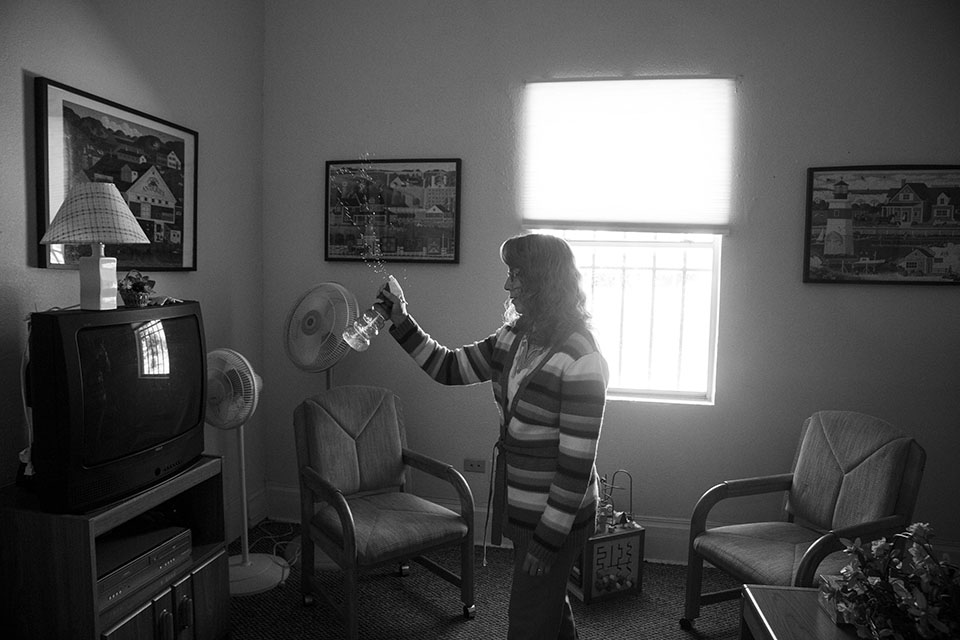
On May 24, 2017, Yolanda Perez Rittimann, a volunteer at crisis pregnancy center Allied Women’s Center, sprays holy water on the television they use to show a graphic anti-abortion video. Crisis pregnancy centers are religious organizations that discourage women from getting abortions; they typically do not have medical professionals but do provide pregnancy tests and ultrasounds. In Texas, some crisis pregnancy centers receive state funding, though Allied Women’s Center does not.
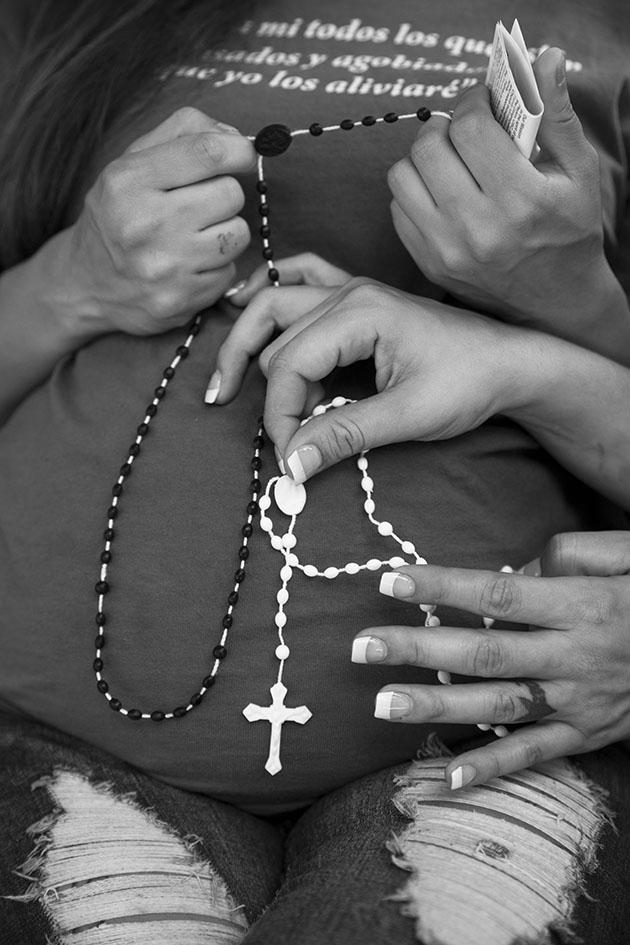
Soto prays over Patricia De Leon’s pregnant belly outside the Sacred Heart Church in McAllen on June 1, 2017. They were, de Leon said, praying for her to find a safe, secure place to live by the time the child is born.
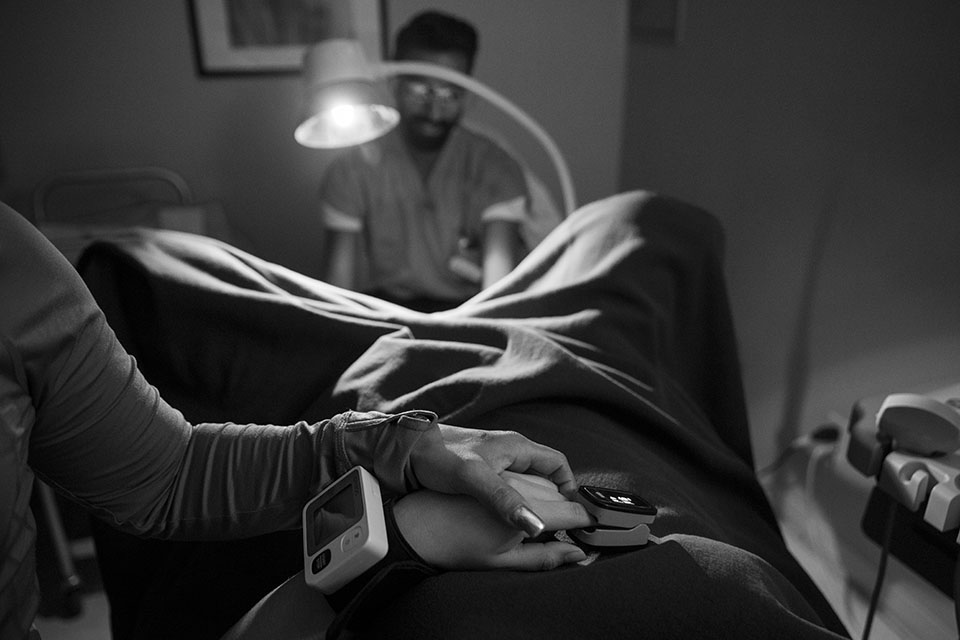
Jess, 25, holds hands with her mother Aisme as she prepares to undergo an abortion performed by Dr. Kumar on June 6, 2017. When Aisme previously drove Jess to Mexico to get abortion pills, Jess got an ultrasound in the back of a store in Acuña, which she described as also selling fruit and purses. Then she purchased misoprostol pills from the store. When the pills did not work, she returned to the store in Acuña and had the same pharmacist who sold her the pills insert two more, because she thought she had inserted them incorrectly. Dr. Kumar suggested that the pills she bought may not have had the right type or amount of medicine. Although she was still eligible for a medical abortion at Whole Woman’s Health, she and Dr. Kumar decided that, because the misoprostol from Mexico did not work, she would be a better candidate for a surgical abortion.
